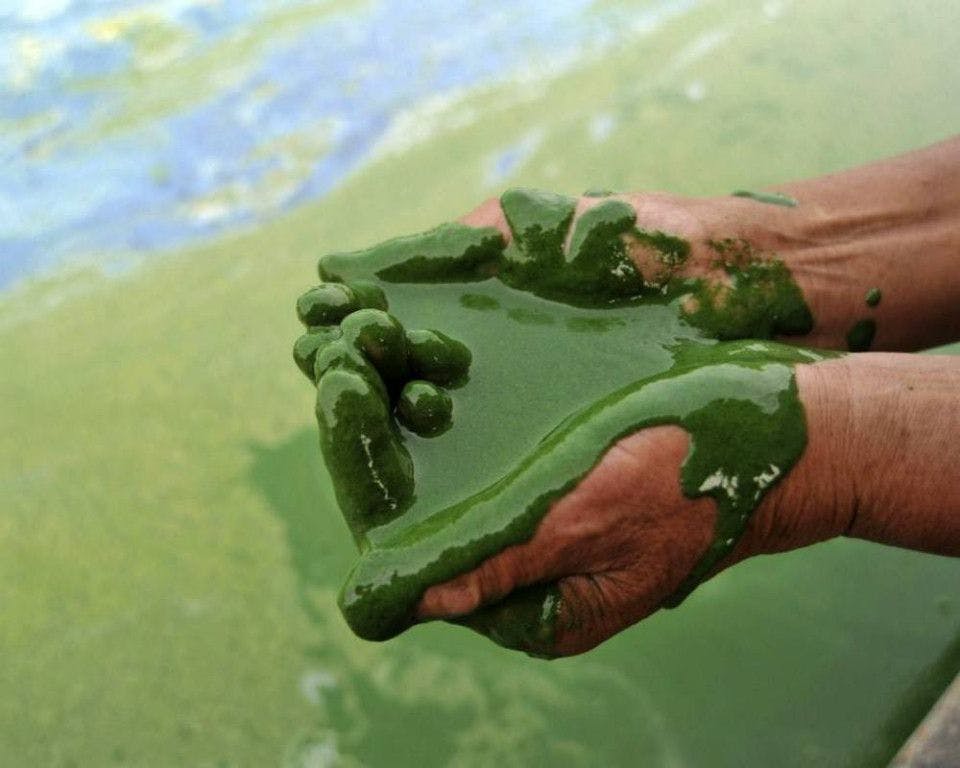
As an ecosystem, there are various nutrient cycles in shrimp farms. The results of the nutrient cycle may harm shrimp, namely from nitrogen cycle activities and bacteria decomposition process. In addition, other organisms, such as plankton, can also produce toxic compounds.
It is crucial for us to monitor possible toxic substances or compounds in our farm. Monitoring can serve as an anticipation to prevent toxic compounds concentration from disrupting shrimp growth and health.
There are at least three toxic compounds in shrimp farms, namely ammonia, hydrogen sulfide, and toxic compounds from plankton. We should be aware of those three, and controlling their concentration is necessary. It will be discussed further below:
Ammonia
Ammonia is the side result of metabolism discharged by fish through the gills as well as the decomposition result of feed residue, feces, and dead plankton. Free ammonia can be toxic if its amount exceeds the limit. The maximum limit of ammonia is <0,01 ppm for traditional farms, ≤0,1 ppm for intensive farms, and ≤0,05 ppm for super-intensive farms.
The accumulation of ammonia can decrease water quality and growth as well as increase oxygen consumption and ammonia ion excretion. Furthermore, the toxicity of ammonia depends on several parameters, namely:
- pH that reaches 9 may increase toxicity and leads to shrimp death.
- In high salinity conditions (up to 40 ppt), ammonia tends to be nontoxic. Meanwhile, ammonia toxicity may increase in low salinity conditions (around 15 ppt).
- Temperature increase causes free ammonia fraction to rise hence ammonia toxicity rises as well.
- The older the shrimp is, the more tolerant it is to toxins. In other words, younger shrimp are more susceptible to the toxic effects of ammonia.
There are a number of measures that can be taken to control ammonia concentration, namely:
- Changing the water, if possible.
- Applying probiotics (mainly nitrification bacteria).
- Adding a source of carbon (e.g. molasses) to stimulate the growth of heterotrophic bacteria.
- Lowering water pH to reduce the proportion of free ammonia.
- Enabling aeration to reduce its negative impacts on shrimp.
Hydrogen sulfide
Hydrogen sulfide (H2S) is the result of bacteria and organic materials activity in anaerobic conditions, usually at the bottom of the pond. H2S does exist at the bottom of the pond which lacks oxygen (anaerobic). It mostly occurs at the bottom of brackish water ponds instead of freshwater ponds due to the abundance of sulfate ions. The maximum limit for hydrogen sulfide concentration in shrimp farms is ≤0,01 ppm.
Hydrogen sulfide level checking is conducted by testing for the colonies of sulfate-digesting bacteria, which are usually black. Causes of hydrogen sulfide emergence are:
- The inability of sunlight to reach the bottom of the pond.
- Anaerobic condition, which is the absence of oxygen at the bottom of the pond.
- The emergence of organic materials, hence sedimentation occurs at the bottom of the pond.
- Overly low DO will support H2S production. The combination of low pH, oxygen, and temperature causes hydrogen sulfide to be more harmful. There are several measures that can be taken to reduce H2S in farms, namely:
- Enabling sufficient aeration and circulation to avoid stagnant (death point) and anaerobic area at the bottom of the pond.
- Implementing calcification to increase pH since pH affects the toxicity of hydrogen sulfide.
- Controlling the amount of organic materials since it is the metabolism material for microorganisms that produce H2S. One of the ways to control it is by adding probiotics as a controlling agent.
Toxic compounds from plankton
Toxins from plankton, mainly from cyanobacteria or often known as blue-green algae (BGA), may cause death to herbivorous zooplankton. The majority of toxic compounds from plankton may also be toxic for shrimp, specifically for their digestion. Some of the toxins produced by plankton are:
- Anatoxin-a (Anabaena, Aphanizomenon, Oscillatoria (Planktothrix))
- Cylindrospermopsin (Aphanizomenon, Cylindrospermopsis, Umezakia)
- Microcystin (Anabaena, Aphanocapsa, Hapalosiphon, Microcystis, Nostoc, Oscillatoria)
- Saxitoxin (Anabaena, Aphanizomenon, Cylindrospermopsis, Lyngbya)
Toxic compounds from plankton emerge when plankton blooming or mass death occurs. At the same time, plankton blooming causes low water transparency, the unavailability of DO in the bottom layer of the pond, and the accumulation of toxic compounds such as ammonia, nitrite, and hydrogen sulfide.
Blooming occurs when the nutrient is abundant, which results from constant feeding, rising temperature, and high intensity of sunlight. Several measures that can be taken when plankton blooming occurs, mainly from algae type, are:
- Using algaecide, especially the one that contains copper sulfate.
- Reducing and manipulating nutrient input to the pond.
- Implementing vertical destratification by stirring or bubbling.
- There are a lot of cyanobacteria types that are intolerant to high salinity. However, pay attention to the salinity range that can be tolerated by shrimp.





